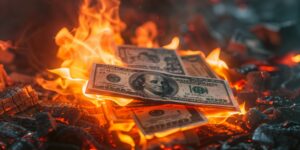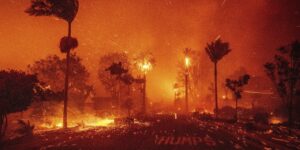Wildfire behavior in 2021 has been historic amid persistent and severe drought conditions across the western United States. In California, fires crossed the Sierra Nevada Mountains for the first time on record. They also closed in on resort properties near Lake Tahoe, contributing to additional losses due to evacuations and business interruption and challenging insurers to stay ahead of an evolving threat.
According to the latest Verisk research on wildfire risk, millions of buildings remain at risk throughout the American west. The updated report for California estimates 2 million housing units—15 percent of the state’s total—are at high and extreme risk of wildfire. Another 1.6 million, or 12 percent, are at moderate risk.
This risk is influenced by fundamental, property-level risk factors such as vegetation, terrain, wind patterns, and access for firefighters and their equipment. However, broader changes in the wildfire risk profile, driven by climate and human encroachment on wildlands, reinforce the importance for carriers to consider additional datapoints that impact wildfire-related claims.
Reconstruction and mitigation
If a property is damaged by wildfire and needs repair or replacement, it’s important to understand the full cost, including labor and materials. Verisk analysis shows that across the top five at-risk counties in California, average reconstruction costs increased 10.1 percent from August 2020 to August 2021.*
Additionally, as climate change elevates concerns about the frequency and severity of large fires, mitigation activities are increasingly at the forefront of wildfire risk research. Mitigating wildfire risk encompasses a range of strategies at both the property and community levels. Verisk works with the insurance industry and organizations dedicated to wildfire prevention and preparedness to further understand this growing peril and countermeasures, including activities such as:
- Defensible space—the creation of buffers around structures that are relatively free of combustible vegetation and other potential fuels
- Structure hardening—the use of fire-resistant materials and other measures to make buildings less susceptible to radiant heat and windborne embers
Wildfire risk is on a rising long-term trajectory, and it takes diverse, high-quality data to take a scientifically sound measure of the threat. Stay up to date on where wildfire risk is highest by downloading the FireLine® Risk Reports.
By Dr. Arindam Samanta, Director of Product Management, Personal Lines Underwriting at Verisk
*Reconstruction cost data from 360Value




















 Leading Insurance Innovation in the AI Age (Part 2: Tech Project Pitfalls)
Leading Insurance Innovation in the AI Age (Part 2: Tech Project Pitfalls)  Will California’s FAIR Plan Have Enough Cash for Its Wildfire Claims?
Will California’s FAIR Plan Have Enough Cash for Its Wildfire Claims?  P/C Insurance Market Profitability Expected to Continue Through 2026
P/C Insurance Market Profitability Expected to Continue Through 2026  Significant But ‘Manageable’ Insurance Losses Expected From LA Fires: S&P
Significant But ‘Manageable’ Insurance Losses Expected From LA Fires: S&P 




